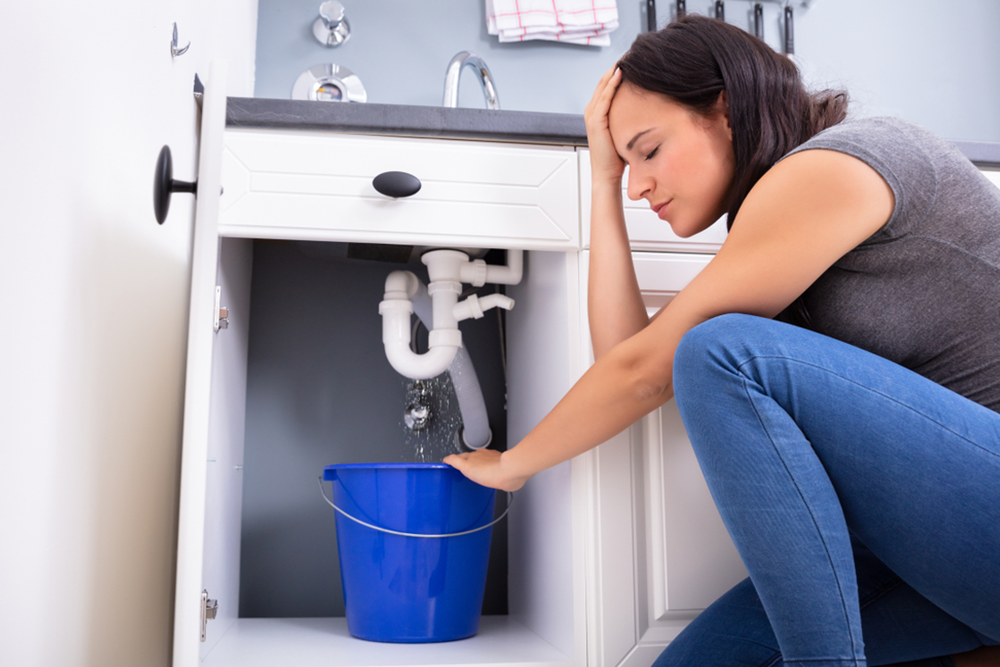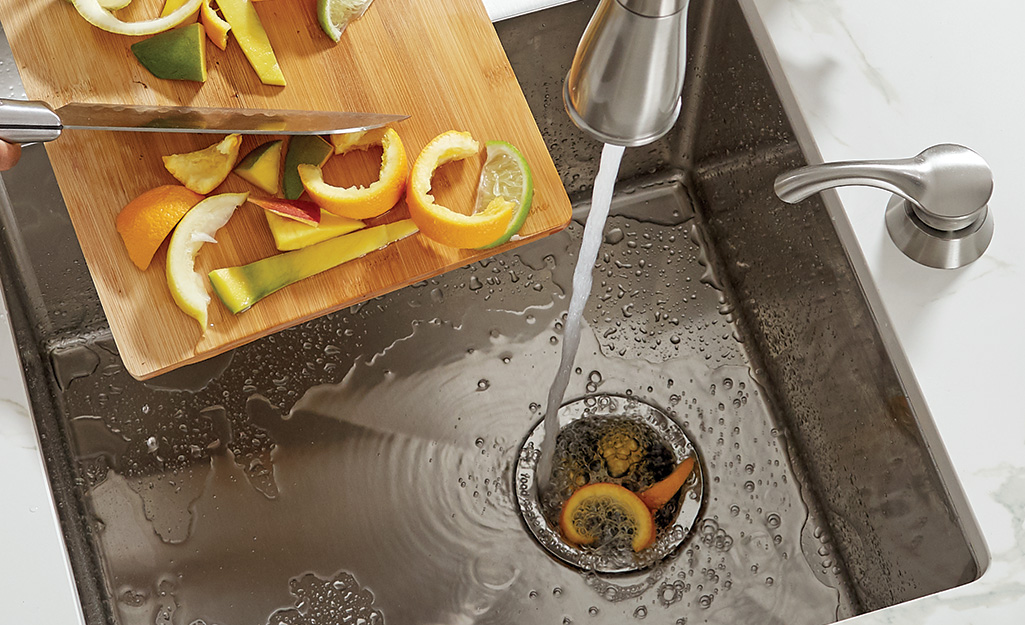Best Tips for Fixing a Leaking Waste Disposal Unit
Best Tips for Fixing a Leaking Waste Disposal Unit
Blog Article
Are you currently trying to locate tips around How to fix a pretty consistent leak from my garbage disposal?

Waste disposal unit are crucial kitchen appliances that assist in dealing with food waste effectively. However, a dripping garbage disposal can be an irritating and unpleasant issue to take care of. Thankfully, numerous leakages can be taken care of easily with a couple of easy actions. In this write-up, we will certainly review exactly how to repair a leaking waste disposal unit efficiently.
Intro
Garbage disposals are set up under cooking area sinks and are developed to shred food waste right into smaller sized pieces, permitting it to go through the pipes system quickly. While these tools are normally reliable, leaks can happen gradually as a result of deterioration, loosened links, or damages to the device.
Usual Sources Of Leakages in Garbage Disposals
Worn Seals and Gaskets
Seals and gaskets play an important function in protecting against water from dripping out of the waste disposal unit. With time, these elements can degrade, bring about leakages around the disposal unit.
Loose Connections
The links between the waste disposal unit and the plumbing system can become loosened with time, triggering water to leak out throughout operation.
Fractures or Holes in the Disposal Device
Physical damage to the waste disposal unit, such as splits or holes in the real estate, can likewise cause leakages.
Identifying the Resource of the Leakage
Prior to trying to fix a dripping garbage disposal, it is vital to identify the resource of the leak. This can typically be done with aesthetic examination or by carrying out straightforward tests.
Visual Evaluation
Check the waste disposal unit unit thoroughly for any type of indications of water leak. Pay attention to locations around seals, gaskets, and connection points.
Evaluating for Leaks
One method to evaluate for leaks is by running water through the disposal unit and checking for any visible indications of leak.
Tools and Products Needed for Dealing With a Dripping Garbage Disposal
Before beginning the repair process, collect the needed tools and materials, consisting of a screwdriver, adjustable wrench, plumbing's putty, replacement seals or gaskets, and epoxy or patching product for fixing cracks or openings.
Step-by-Step Guide to Dealing With a Leaking Waste Disposal Unit
Turn Off the Power
Prior to attempting any type of repair work, make certain that the power to the garbage disposal device is turned off to avoid the threat of electric shock.
Find the Leakage
Recognize the precise area of the leakage and determine the reason.
Tighten Links
Use a wrench to tighten any type of loose connections between the disposal unit and the pipes system.
Replace Seals or Gaskets
If the leak results from used seals or gaskets, get rid of the old components and replace them with new ones.
Patching Fractures or Openings
For fractures or openings in the disposal device, use epoxy or a suitable patching product to secure the damaged area.
Testing the Waste Disposal Unit After Repair
Once the repair service is complete, evaluate the garbage disposal by running water via it to make certain that the leakage has actually been dealt with.
Preventive Upkeep Tips to Prevent Future Leaks
To prevent future leaks, it is vital to carry out routine upkeep on your garbage disposal. This includes maintaining it tidy, staying clear of putting non-food items or tough objects down the disposal, and periodically looking for leaks or various other issues.
Final thought
Finally, dealing with a leaking garbage disposal is a reasonably straightforward procedure that can be completed with basic devices and products. By adhering to the actions laid out in this short article and practicing preventive upkeep, you can maintain your waste disposal unit in good working condition and avoid costly fixings in the future.
What to Do About a Leaking Garbage Disposal
A leaking garbage disposal often goes unnoticed until you confront a sopping cabinet, a foul-smelling puddle, or an audible drip-drip-drip from the unit. The fix can be frustrating, too, because the leak can stem from a number of components in the system. Fortunately, with a little sleuthing, you can zero in on the leak and—depending on the exact location—stop the icky oozing and repair the component that caused it. Worst case scenario, if it turns out that the garbage disposal must be replaced, installing a new one is a reasonable do-it-yourself task for those with basic plumbing skills. Read on to keep the cash you’d otherwise hand over to a pro.
Prepare to find the leak
Prior to testing the garbage disposal for leaks, unplug it at the wall outlet and turn off the power from the breaker box to prevent electrical shock. Then insert a watertight sink stopper into your sink drain and wipe the unit dry with a clean cloth. In any handy container, mix a few drops of food coloring into a few cups of water, and pour the dyed water onto the sink stopper to help you locate the leak.
Investigate the source
the top, where the disposal meets the sink drain the side, where the dishwasher hose or main drain pipe connects to the disposal or the bottom of the unit Inspect each of these locations while gliding a light-colored rag over the unit; the dyed water will readily show on the rag and reveal the location of the leak. If a leak isn’t immediately apparent, remove the sink stopper and pour a few more cups of dyed water down the sink drain, then check for leaks again. Leaks near the top of the unit are more likely to show themselves while the sink is plugged, while side and bottom leaks are more noticeable while the sink is unplugged.
The metal sink flange that sits directly inside the sink drain is typically sealed around the top with plumber’s putty (a clay-like sealant) and then secured from under the sink with bolts. If the plumber’s putty deteriorates, or the bolts loosen, the flange can no longer form a watertight seal between the sink drain and the disposal—which could cause a leak at the top of the unit.
To reseal the leaky flange, you must first detach the garbage disposal. Start by loosening the screws securing the main drain pipe to the disposal, then loosen the screws in the metal clamp securing the dishwasher hose to the disposal and detach the drain pipe and dishwasher hose from the disposal. Loosen the screws in the mounting ring that connects the disposal to the metal mounting assembly beneath the sink, then pull down the disposal and carefully set it on a clean, dry surface. Loosen the bolts in the mounting assembly with a wrench, then pull down the mounting assembly and set it near the disposal.

As a serious reader on Garbage Disposal Leaking From Bottom, I thought sharing that segment was really helpful. Are you aware of someone else who is involved in Tips on Fixing a Leaking Garbage Disposal? Be sure promote it. I appreciate reading our article about The Handy Guide To Fixing Your Garbage Disposal Leaking.
Contact Report this page